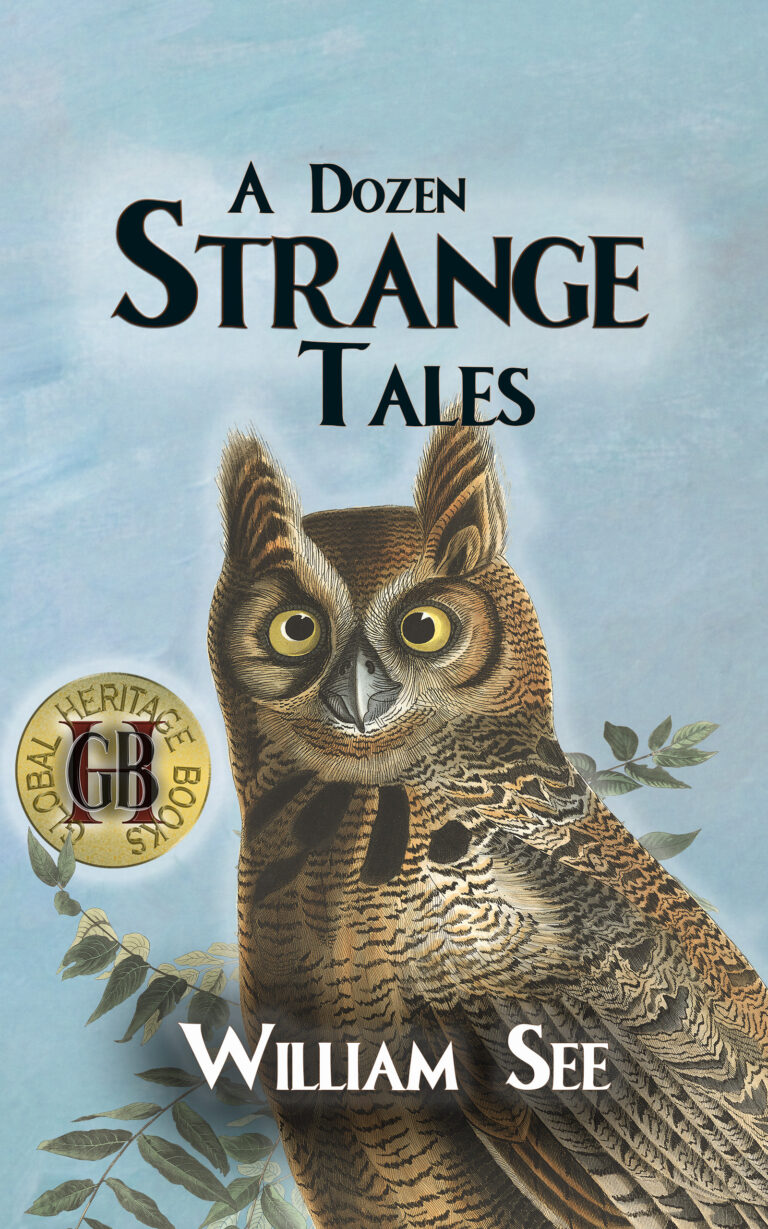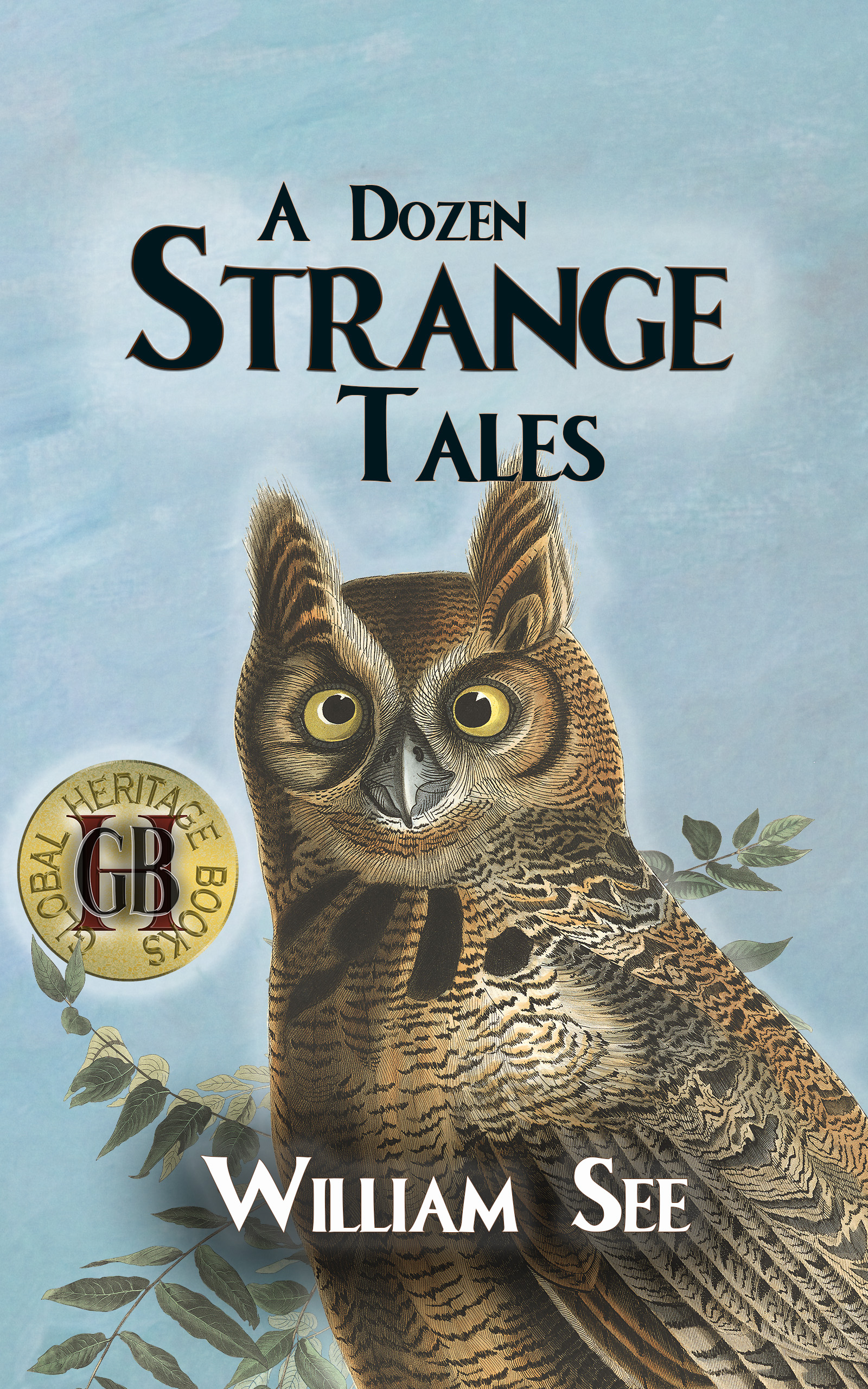William See’s short story collection, A DOZEN STRANGE TALES, begins with one of its strongest entries,“Man with a Past,” a richly immersive period tale which finds an amnesiac Frenchman struggling to survive the beautiful but harsh landscape of early colonial North America. Subsequent entries explore different epochs, including the Spanish Flu epidemic’s effect on small-town America in “Quarantine of Knux Patterson,” the Pacific theater of World War II in “Japanese Bullet”, and the drafting of the Massachusetts state constitution in “Sensible Stranger.” Despite the book’s title, these stories aren’t particularly “strange,” but rather relatively straightforward historical tales.
However, genre fans should still be pleased, as plenty of other stories feature elements of horror and fantasy. Ghosts and spirits are a recurring theme, in sometimes unexpected ways. In “House on Fife Avenue,” a friendly specter makes a very gentle intervention in the main character’s life, while in “Little Nicholas,” an equally friendly poltergeist plays a harmlessly mischievous prank. More horrific themes feature in “Commedia Dell’Arte,” a story of murder in rural 18th century France, and the collection’s closer, “Big Claude,” is an American Gothic tale which blends pathos and extreme violence. Perhaps the collection’s most inventive entry, “Pocket,” involves a character with an extraordinary power, that of causing whatever he writes down to come true.
See’s plots suggest a wide set of literary influences. One story strongly evokes Ambrose Bierce’s “An Occurrence at Owl Creek Bridge” (though it would be a spoiler to say which), while others echo, more distantly and perhaps not intentionally, the works of Emile Zola, Tennessee Williams, and Ursula K. Le Guin. His stories also sometimes suggest an autobiographical intent, often depicting his home state of Tennessee, and in one case a young doctor who readers might guess is the author (who is a practicing physician) at the start of his career. See shows a rich gift for describing landscape and capturing atmosphere, but his writing is flawed by a tendency toward stilted dialogue and, even more distractingly, grammatical and syntactical errors within the text.
A talented and versatile storyteller, William See’s A DOZEN STRANGE TALES contains a varied and inventive set of stories, touching on horror, history and the supernatural, with appeal for a wide range of readers.
~Everett Jones for IndieReader


